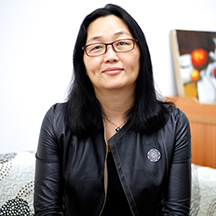Professor and Associate Dean,
School of Journalism and Information Communication,
Huazhong University of Science and Technology, China
Xianhong Chen is the Professor and Vice Dean of the School of Journalism and Information Communication, Huazhong University of Science and Technology, Wuhan. The President of Public Relations Society of China (PRSC ), Research area is in Public Relations and strategic communication, New Media and Public Relations, nationa Image. Email: 402928044@qq.com. Published English Papers include an below:
- How Public Relations functions as news sources in China Public Relations Review 38 (2012)
- The image of the United States in the Chinese media: Public Relations Review 38 (2012)
- New Media as the Relations,Journal of Chinese Comunication,2009
- Public Relations as Relationship Ecology Management: A new perspective and Its Innovation to Public Relations theory. Presentation at the international Forum on Intellectual Property rights, Communication and the Public Domain in the Asia-Pacific Region,14-17 December 2004.in University of Queensland ,Brisbane, Australia.
- Brand-Building in the Chinese Social and Cultural Contexts: Characteristics, Trends, and Problems. Freiberger Beitraege zur interkulturellen und Wirtschaftskommunikation: A Forum for General and Intercultural Business Communication (Volume 4)
- “Advertising Wounds, Public Relations Cure: Corporate Social Responsibility perspective in China.” International Journal of Business and Social Science1(2): 137-151.
- “Relational Corporate Social Responsibility: Pubic Relations Implications in Culturally Confucius China.” International Journal of Business and social science1(3): 118-124.
- How PR Affect News: A Study on News Sources of Newspapers in Mainland China 2001-2010, the keynote speaker on the international forum of PR and Advertising in USA,2011,8
Title and Abstract:
The Strategic Shift of Public Relations Discipline: Opportunities and Challenges Faced by China in the Big Data Era
In the 21st century, strategic communication is becoming a heated topic in public relations education. “Strategic communication” was originally used as a “niche”, mainly adopted in government and military communication (Farwell, 2012, Paul, 2011). The term has gradually evolved to umbrella a wider scope of target-oriented communication activities, ranging from public relations, marketing, financial communication, health communication, public diplomacy and movement etc. In the United States, an increasing trend was seen with the universities incorporating public relations and advertising elements into strategic communication course. In Europe, strategic communication is often regarded as a symbolic management method, applicable to different aspects of the integrated communication field. In Asia-pacific region, strategic communication is also used in professional, educational, and other academic field (Mahoney, 2013).
Against this background, the present study asks: in the big data era, does there exist a similar “strategic turn” in the education, research, and practice in Chinese public relations academia and industry? How does the current landscape appear? What are the opportunities and challenges faced by Chinese public relations scholars and practitioners? Method-wise, this study adopted qualitative in-depth interviews with 10 senior public relations practitioners and 10 renowned public relations scholar in the Greater China region. Results found that: 1) There exists an interested “Besieged city”(“圍城現象”) phenomenon manifesting the tension between “de-institutionalizing public relations”(“去公关化”) and “institutionalizing public relations” ”(“公关化”). While some Chinese public relations consultancies have attempted to realize de-institutionalizing public relations by quantifying their work, a few advertising agencies has taken the approach to achieve “institutionalizing public relations” by making a “strategic consultation shift”. 2) In public relations and strategic communication research field, “Positive public relations”(“ 阳光公关” ) and “schematic public relations (“阴谋公关”) have become population agenda. Topics relevant to strategic communication such as “national image”, “public diplomacy”, “cultural soft power”, and “crisis communication” have become important research agenda in the Chinese communication scholarship. While journalism scholars remain in the mainstream, the authority of public relations scholars are challenged. 3) The debate in Chinese communication education about “down-playing news” (“唱衰新闻”) and “up-playing public relations” (“唱红公关”) is facilitated with the decline of traditional news media and media integration. Such contributes to the academic community of a “academic common carrier” (“学科共同体”) and give rise to more strategic development opportunities for public relations education in the Mainland China.
To conclude, under the background of media integration in big data era, the Chinese public relations should promote the importance of strategic communication. With the ultimate aim to defend the narrative power and authority of public relations discipline, one should emphasize the equal status to protect itself from “integrate or be integrated” and “eliminate or be eliminated” in the tug war.
List of Speakers




